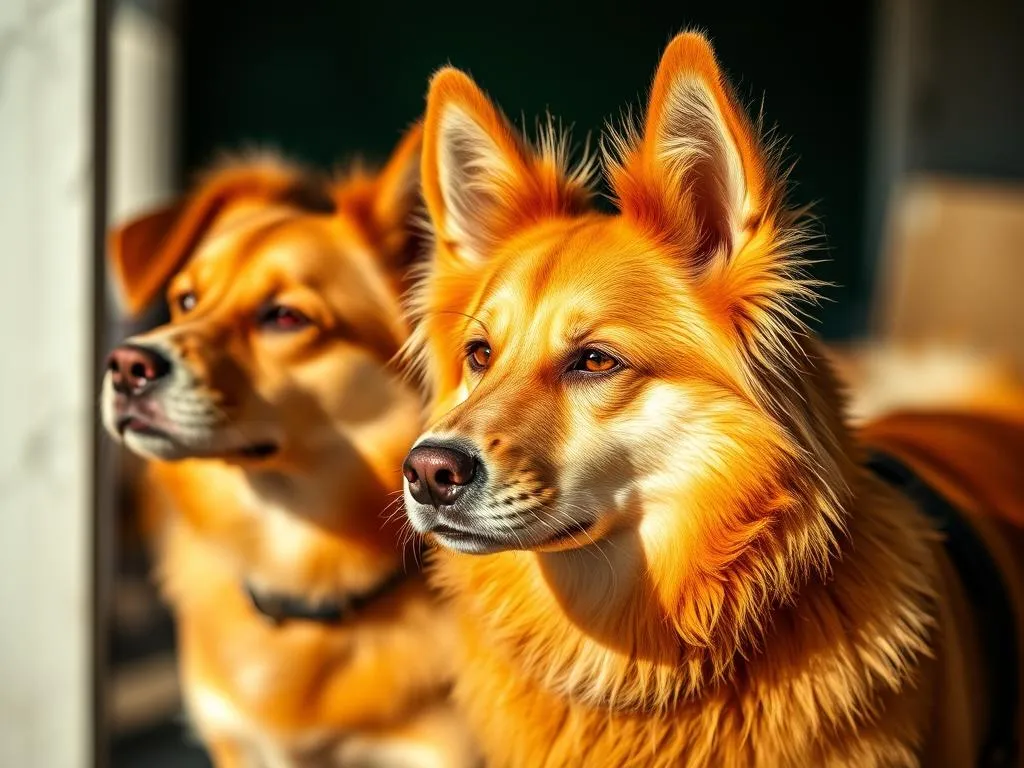
Choosing the right dog breed for hot climates is crucial for ensuring the health and comfort of your furry friend. Dogs, like humans, can struggle in extreme temperatures, and understanding how breed characteristics influence their tolerance to heat is key to keeping them happy and healthy. In this article, we will explore the best hot weather dog breeds, how to care for them during scorching days, and the signs to watch for when they may be overheating.
Understanding Heat Tolerance in Dogs
Physiological Factors
Dogs have a unique way of regulating their body temperature. Unlike humans, who primarily sweat to cool down, dogs rely on panting and their paw pads to release heat. This means that certain breeds, particularly those with short snouts (brachycephalic breeds), may struggle more in hot weather compared to those with longer snouts. Brachycephalic breeds, such as Bulldogs and Pugs, have narrower airways, making it difficult for them to breathe efficiently when temperatures rise.
On the other hand, breeds with longer snouts, like Greyhounds and Dalmatians, tend to have better heat tolerance due to their more effective panting ability. Their longer muzzles allow for greater airflow, which helps in cooling down their bodies more efficiently.
Signs of Heat Stress
Recognizing the signs of heat stress in dogs is essential for preventing serious health issues. Common symptoms include:
- Excessive panting
- Drooling
- Weakness or lethargy
- Rapid heart rate
- Vomiting
- Dark red gums
If you observe any of these signs, it’s vital to take immediate action to cool your dog down and prevent overheating.
Characteristics of Hot Weather Dog Breeds
Coat Type
The type and length of a dog’s coat play a significant role in their ability to tolerate heat. Breeds with a single coat, like the Basenji, tend to fare better in hot weather compared to those with double coats, which are designed for insulation in colder climates. While double-coated breeds can shed their undercoat in warm weather, they may still struggle to keep cool.
Size and Body Structure
Body size and shape also impact a dog’s heat retention. Smaller breeds, such as Chihuahuas, generally have a larger surface area relative to their body mass, allowing them to dissipate heat more effectively. In contrast, larger breeds can retain heat due to their greater mass. Thus, the body structure of a dog is an essential consideration when assessing its heat tolerance.
Activity Level
A dog’s activity level influences how well they cope with heat. Highly energetic breeds may require more frequent hydration and breaks during outdoor activities in hot weather. Owners should consider their dog’s energy levels and adjust exercise routines accordingly.
Top Hot Weather Dog Breeds
Breeds Ideal for Hot Climates
Some breeds are naturally equipped to handle high temperatures better than others. Here’s a list of hot weather dog breeds known for their heat tolerance:
-
Basenji
The Basenji is a small, energetic breed with a short, fine coat that makes it well-suited for hot climates. They are known for their independence and intelligence, making them a delightful companion for those living in warmer areas. -
Chihuahua
Chihuahuas thrive in hot weather due to their small size and single coat. They’re adaptable and can often be seen basking in the sun, but owners should monitor them closely for signs of overheating. -
Dalmatian
Dalmatians have a short coat that allows for efficient heat dissipation. Their active and playful nature makes them excellent companions for outdoor activities in warm weather, provided they have access to plenty of water and shade. -
American Staffordshire Terrier
This breed is muscular and has a short coat, making it well-equipped for hot climates. They are energetic and require regular exercise, so it’s essential to plan outdoor activities for cooler parts of the day. -
Greyhound
Known for their speed, Greyhounds also have short coats and lean bodies that help them stay cool. They are surprisingly low-energy indoors and enjoy lounging in the shade after a brisk walk.
Breeds to Avoid in Hot Weather
While some breeds can handle the heat, others are ill-equipped for high temperatures. Here are some breeds to avoid in hot weather:
-
Bulldog
Bulldogs are notorious for their heat intolerance due to their short snouts and heavy build. Their difficulty in breathing can lead to serious health risks in hot conditions. -
Pug
Like Bulldogs, Pugs have brachycephalic features that make them susceptible to overheating. They require careful management of their outdoor activities during warm weather. -
Shih Tzu
Shih Tzus possess a thick double coat and short muzzle, which can hinder their ability to regulate body temperature. They are best kept in cooler environments during hot spells.
Tips for Keeping Dogs Cool in Hot Weather
Hydration
Fresh water should always be available for dogs, especially during hot weather. Dogs can become dehydrated quickly, so it’s essential to monitor their water intake. Signs of dehydration include dry gums, lethargy, and excessive panting.
Shade and Shelter
Providing adequate shade is crucial for keeping dogs cool. If your dog spends time outdoors, ensure they have access to shaded areas where they can escape the sun. You can also create a cool shelter with tarps or tents to provide relief from the heat.
Timing Outdoor Activities
The best times for exercising your dog in hot weather are early morning or late evening when temperatures are cooler. Avoid walks during peak heat hours, typically between 10 AM and 4 PM, to prevent overheating.
Cooling Products
There are several cooling products available for dogs, including cooling mats, vests, and dog-friendly pools. These products can help regulate your dog’s body temperature and keep them comfortable in the heat.
Grooming
Regular grooming is essential for maintaining a dog’s coat and heat tolerance. For certain breeds, trimming their fur can help them stay cooler. However, avoid shaving double-coated breeds, as their fur provides insulation and protection from the sun.
Signs Your Dog Is Overheated
Early Warning Signs
It’s crucial to be vigilant for early signs of overheating in your dog. Watch for:
- Excessive panting
- Rapid heart rate
- Restlessness or agitation
- Loss of coordination
Emergency Response
If your dog shows signs of overheating, take immediate action:
- Move them to a cooler area with shade or air conditioning.
- Offer fresh, cool water in small amounts.
- Wet their paws and body with cool (not cold) water.
- Monitor their condition closely.
If symptoms persist or worsen, seek veterinary help immediately. Heatstroke can be life-threatening and requires prompt medical attention.
Conclusion
Choosing the right breed for hot climates is essential for your dog’s well-being. Understanding the hot weather dog breeds and their unique characteristics can help you make an informed decision. Additionally, taking measures to keep your dog comfortable and safe during hot weather is vital for responsible pet ownership. Remember to monitor your dog for signs of overheating and provide them with the care they need to thrive in warmer temperatures.
FAQs
What are the best dog breeds for extreme heat?
Breeds like the Basenji, Chihuahua, Dalmatian, American Staffordshire Terrier, and Greyhound are excellent choices for extreme heat due to their physiological adaptations and coat types.
How can I help my dog cope with high temperatures?
Ensure your dog has access to fresh water, provide plenty of shade, time outdoor activities for cooler parts of the day, and consider using cooling products.
Can all dogs adapt to hot weather?
Not all dogs can adapt to hot weather. Brachycephalic breeds like Bulldogs and Pugs are particularly vulnerable to heat stress and may require extra precautions.
What are the signs of heatstroke in dogs?
Signs of heatstroke in dogs include excessive panting, drooling, weakness, rapid heart rate, vomiting, and dark red gums. If you observe these symptoms, act quickly.
Are there any special diets for dogs in hot weather?
While there aren’t specific diets for hot weather, providing fresh water and ensuring your dog doesn’t overeat can help them stay hydrated and comfortable during warm spells.









